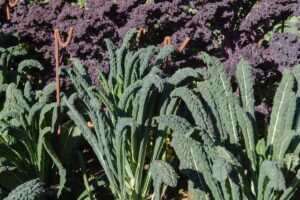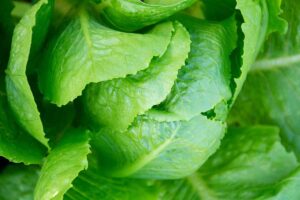Abelmoschus esculentus ‘Burgundy’
First introduced at Clemson University in 1983 and honored as an All-America Selections winner in 1988, ‘Burgundy’ okra may still give a vegetable gardener pause these 40 years later.
Red podded okra? Who would have thought?
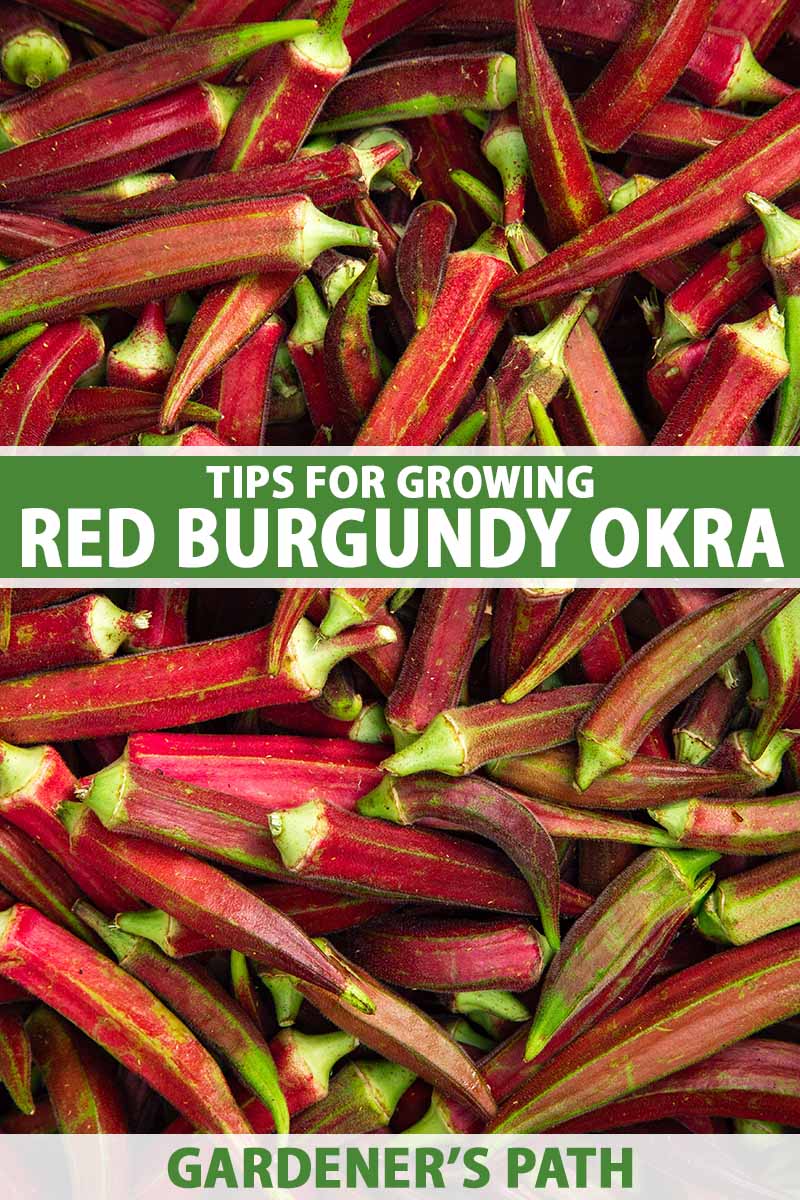
We link to vendors to help you find relevant products. If you buy from one of our links, we may earn a commission.
Once you’ve seen its showy yellow hibiscus-style blooms, burgundy stems, and mottled red and green leaves, a flower gardener may experience a second revelation.
Ornamental okra? Well, I’ll be.
Even if red okra and beautiful vegetable plants growing in the flower bed are old news to you, I’d like to give you more information about ‘Burgundy,’ with the hope that it might find its way into your garden.
Here’s what I’ll share:
What You’ll Learn
What Is ‘Burgundy’ Okra?
Sometimes called ‘Red Burgundy,’ this variety is an open-pollinated, heirloom cultivar of the Abelmoschus esculentus species.
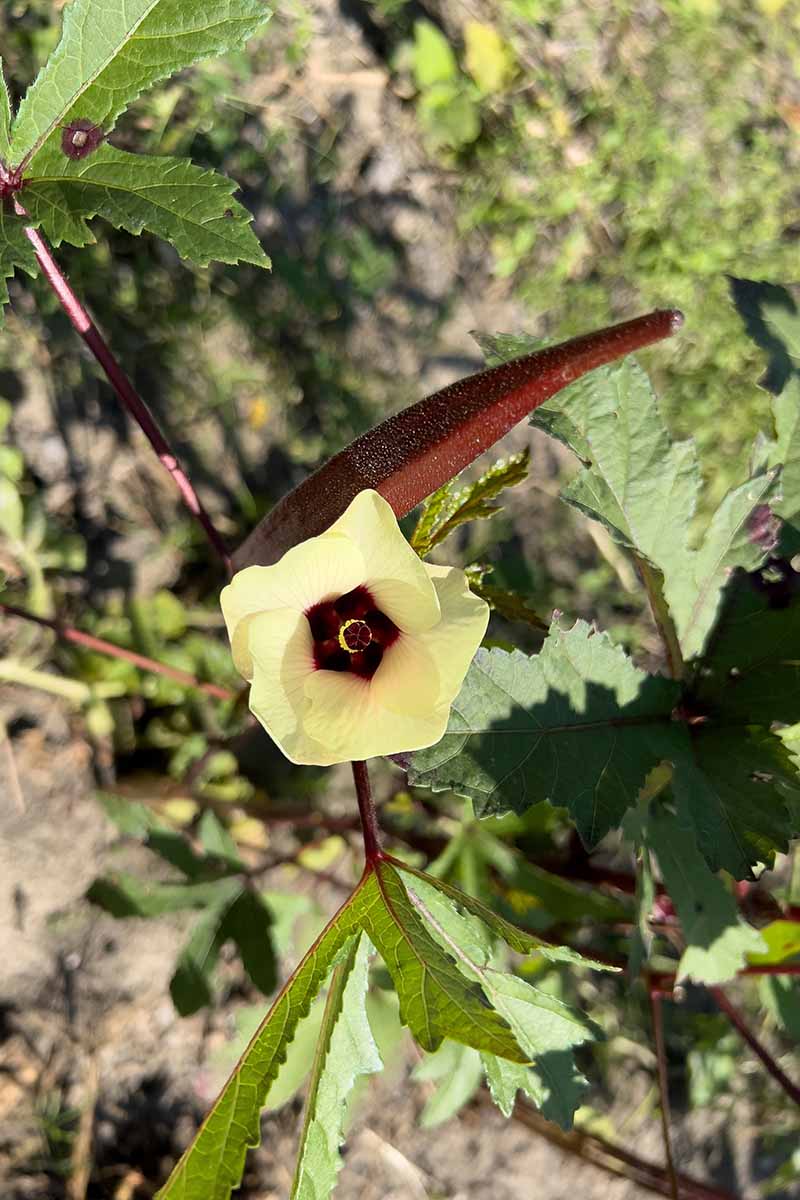
All okra varieties are of unknown origins, but horticulturists believe they most likely originated in tropical Africa and Asia.
This type was bred by Leo Robbins at Clemson University in the 1970s and 80s and gained favor for its high yields and dashing colors, along with the uniform proportions of its flowers, foliage, and crimson pods.
A couple of side notes if you’re considering growing ‘Burgundy’ instead of a more typical green variety:
First, it does yield lots of edible pods, but only in comparison to other red okra types. All the reds produce less than the green varieties.
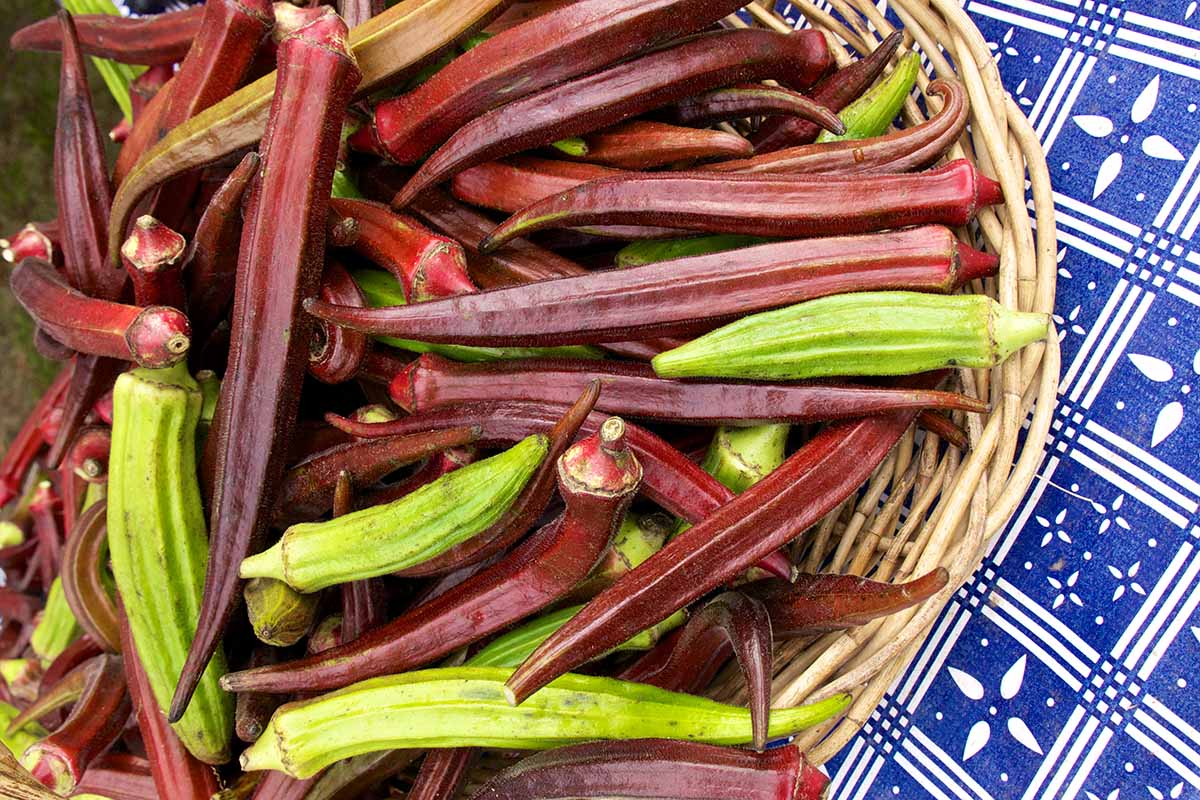
Second, the fun color of the pods will only make it as far as the salad bowl. Once the red pods meet the heat, they tends to turn more of a light brick red or green color.
And third, you may want to give this type a go even if you’re not a fan of okra. The plants are quite attractive, from the burgundy-hued stems to the two- to three-inch yellow flowers with their red centers.
For the price of a packet of seeds, you could grow dozens of blooming okra plants in place of far fussier annuals with less appealing flowers.
Or, you can grow the crimson pods long past the stage where you’d want to eat them, and let them dry on the plants for a showy, colorful addition to fall flower arrangements.
Best of all, you can combine the vegetable and ornamental functions if you like. No need to choose!
Here’s how to get started:
Propagation
You may be able to find ‘Burgundy’ starts at a local nursery, but even here in the South, I’ve found that’s a rare occurrence.
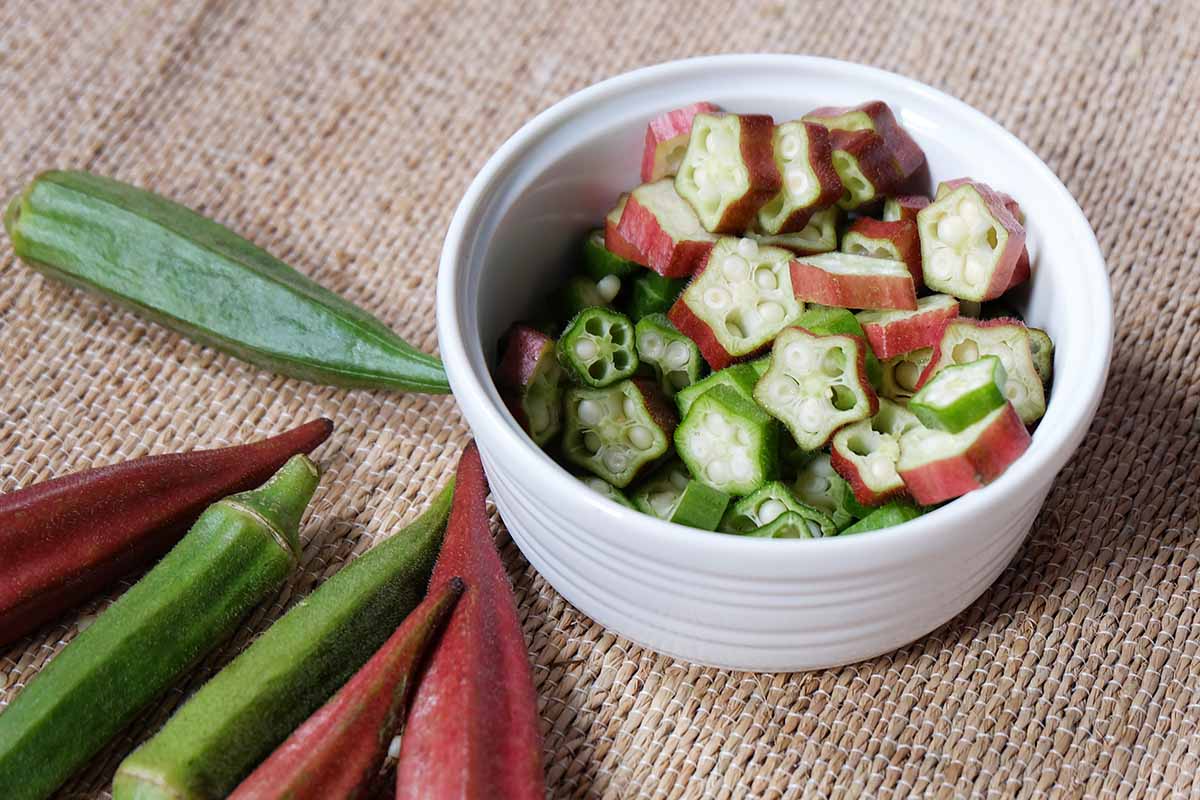
No worries, though, since you can readily grow these plants from seed.
How many should you plant? That depends on how you intend to use the harvest.
If you’re like me – devoted to okra pickles and planning to put up a couple of cases of pint jars – you may want to start about a dozen plants for several bushels worth over the season.
If your goal is to dehydrate whole pods or freeze breaded or blanched slices, you might want as many as 20 to 30 plants to preserve enough for the whole family.
Keep in mind that while it’s a heavy producer among the red okra varieties, ‘Burgundy’ is far less prolific than the agriculture industry favorites like ‘Clemson Spineless.’
In other words, plants will yield dozens of pods each, but not hundreds.
When planting ‘Burgundy’ for its edible blooms you may want to plant a few seeds every couple of weeks, so you’ll have flowers throughout the warm months.
If your aim is pretty, dried red-purple pods for floral arrangements, you could probably get away with just three or four plants.
For outdoor cultivation, you’ll want to wait until the soil is good and warm, at least 60°F, before sowing.
It will help to soak the seeds for 12 hours ahead of time or to use a paring knife or emery board to roughen up the seed coatings to help them sprout more quickly.
You can opt for indoor starts when gardening in an area with a short growing season or if you’re anxious to be the first to harvest in your neighborhood.
I’ve had decent luck with transplants, but they’re not nearly as reliable as direct sowing, especially if you start or purchase them too far ahead of the date when you can plant them out.
Okra seedlings don’t like having their roots disturbed, so improve your odds of success by starting seeds in biodegradable pots you can transplant directly into the soil.
Also, make sure to harden off the plants ahead of moving them into raised beds or in-ground gardens. They have difficulty coping with temperature fluctuations, so introduce them to outdoor temperatures gradually over the course of a week or so.
For more extensive propagation methods for all okra varieties, see our growing guide.
How to Grow
If you’ve heard tales about okra that grows a trunk as thick as a sapling and has two-foot taproots that could survive hurricanes, I’m here to tell you – that can be true!
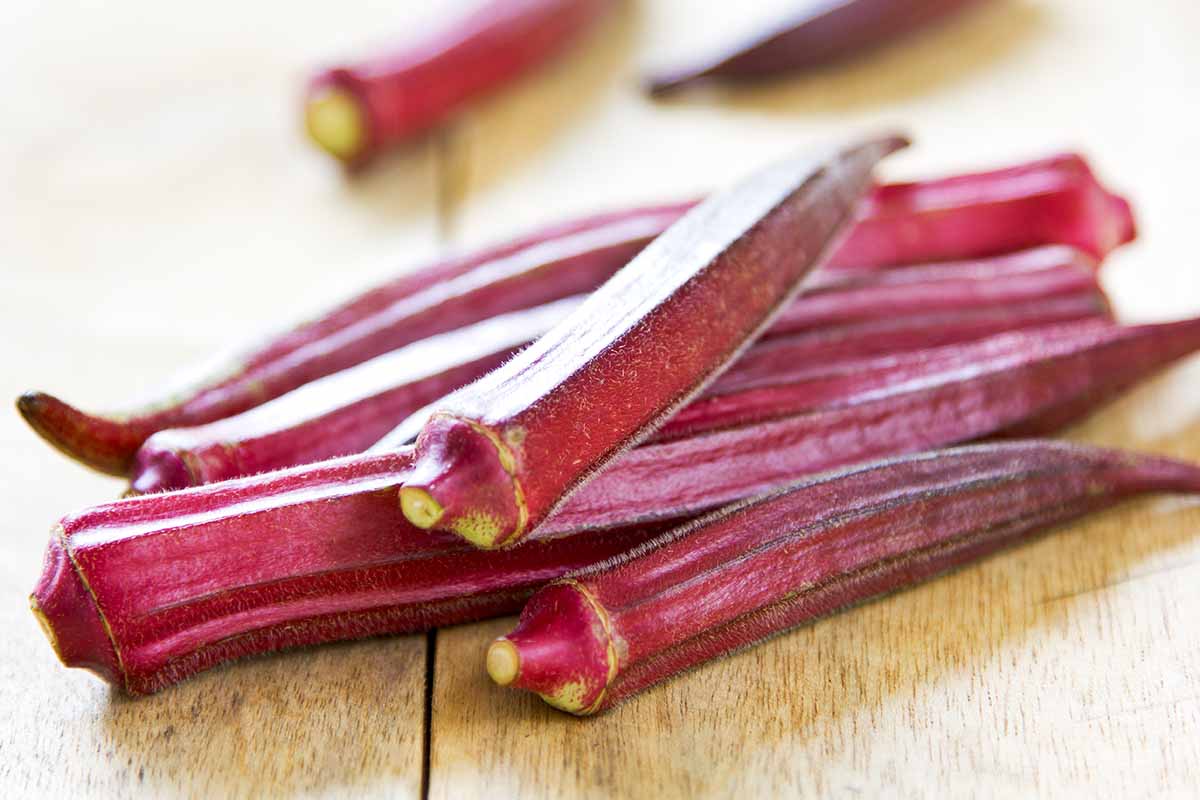
These sturdy plants grow up to four feet tall and both the lateral roots and branches can spread about two and a half feet.
So they need plenty of room to grow, at least two feet apart in their final spacing.
They do best growing in full sun.
You’ll also want to plant ‘Burgundy’ in well-draining, loamy soil amended the season before with plenty of aged organic matter, like mushroom compost.
Okra can tolerate soil that’s not as rich in nutrients, but the yield won’t be as great and the plants won’t be as full and pretty.
During the season, okra needs ample water – about an inch per week between rain and supplemental watering is ideal.
Of course, the plants are drought-tolerant and can go without water for several weeks in warm weather.
But since you’re attempting to achieve maximum growth and yields (aren’t you?!), you’ll want to water as needed so the plants will be healthy, not just surviving.
They also appreciate a thin layer of mulch when they’re a few inches tall. Be sure to use mulch that hasn’t been treated with herbicides since that will kill the plants.
And make sure the straw, lawn clippings, or your choice of material doesn’t touch the stems or leaves of the plants since that increases the risk of disease.
Growing Tips
- Space plants 18 to 24 inches apart.
- Plant in full sun.
- Sow seeds only after the soil temperatures reach 60°F in spring.
- To suppress weeds, apply a thin layer of mulch when seedlings are a few inches tall.
Pruning and Maintenance
When the plants reach four or five feet tall and are nearing the end of pod production, you may want to prune the lower leaves. This will encourage ‘Burgundy’ to grow more flowers and ultimately form more pods.
If you want to save these heirloom seeds to grow more next year, you can stop picking the pods late in the season. We have more detailed instructions for saving okra seed in our guide.
Where to Buy
I’m going to share a number of options for seeds so you can conveniently add ‘Burgundy’ to your order as you’re stocking up for the summer vegetable patch.
High Mowing Seeds offers variously-sized packets and bulk sacks ranging from envelopes of about 25 organic seeds to five-pound sacks with more than 37,000.
Quantities ranging from 35-seed packets to 7,500-seed bulk sacks are available from True Leaf Market.
Botanical Interests sells 70-seed packets.
And conventional ‘Burgundy’ seeds are available from Eden Brothers in packets and one-pound bags.
Eden Brothers also sell an organic version in small packets and larger 450-seed packages.
Managing Pests and Disease
As part of its “easy to grow” profile, ‘Burgundy’ does not tend to succumb to typical vegetable garden diseases, and insect pests rarely attack it.
Avoid issues by providing ample spacing and air circulation. Prevent overly damp conditions by being careful not to overwater and be sure to plant in well-draining soil.
A few of the ailments that may occur include powdery mildew and fusarium wilt, while potential pests include aphids, cucumber beetles, and spider mites.
Harvest and Storage
Like all types of okra, ‘Burgundy’ requires a bit of babysitting as it nears maturity.
You won’t be coddling the plants but making sure they don’t zoom from buds to brittle, overgrown pods in a matter of days.
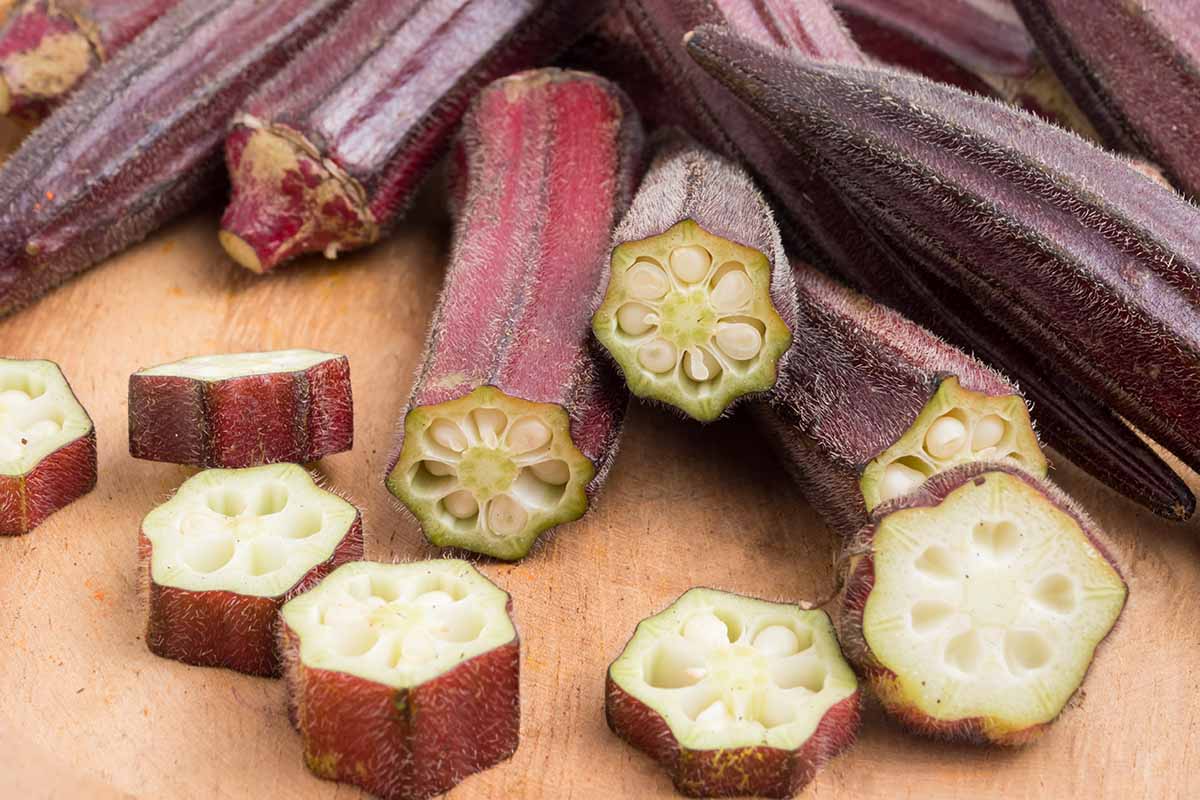
Start by noting the probable number of days to maturity, 50 to 60 days, in your gardening journal or set a cell phone reminder.
Then look for blooms starting a week or so ahead of that date. If you like, you can pinch some of the flowers and enjoy them shredded into salads or batter-fried, much like squash blossoms.
Naturally, the blooms you eat won’t also produce pods, so don’t pick too many!
Learn more about harvesting in our edible flowers guide.
Once you spot flowers, you’ll need to hustle for a viable harvest of the pods.
You see, ‘Burgundy’ okra is best picked when the pods are immature, maybe three or four inches long, and that state of perfection occurs just a few days after blooming.
You’ll want to use the smaller tender pods for dehydrating, freezing, or pickling as well as fresh eating.
Note, ‘Burgundy’ pods are still edible when they are six to eight inches long, but they start to get tougher and require longer cooking at those stages.
They’d be too tough to pan-fry, for example, though they could still feature as an ingredient in a stew if you chopped them finely and cooked them for an hour or more.
So pick ‘em while they’re young, using clean scissors or a paring knife. Never attempt to twist the pods from the stems because that can damage both pods and plants.
Recipes and Cooking Ideas
Oh, yum. It’s time to eat the okra!
If you’ve diligently picked them when they’re young and ever-so-tender, you can snack on ‘Burgundy’ pods straight from the garden, much like you would nibble on a fresh green bean.
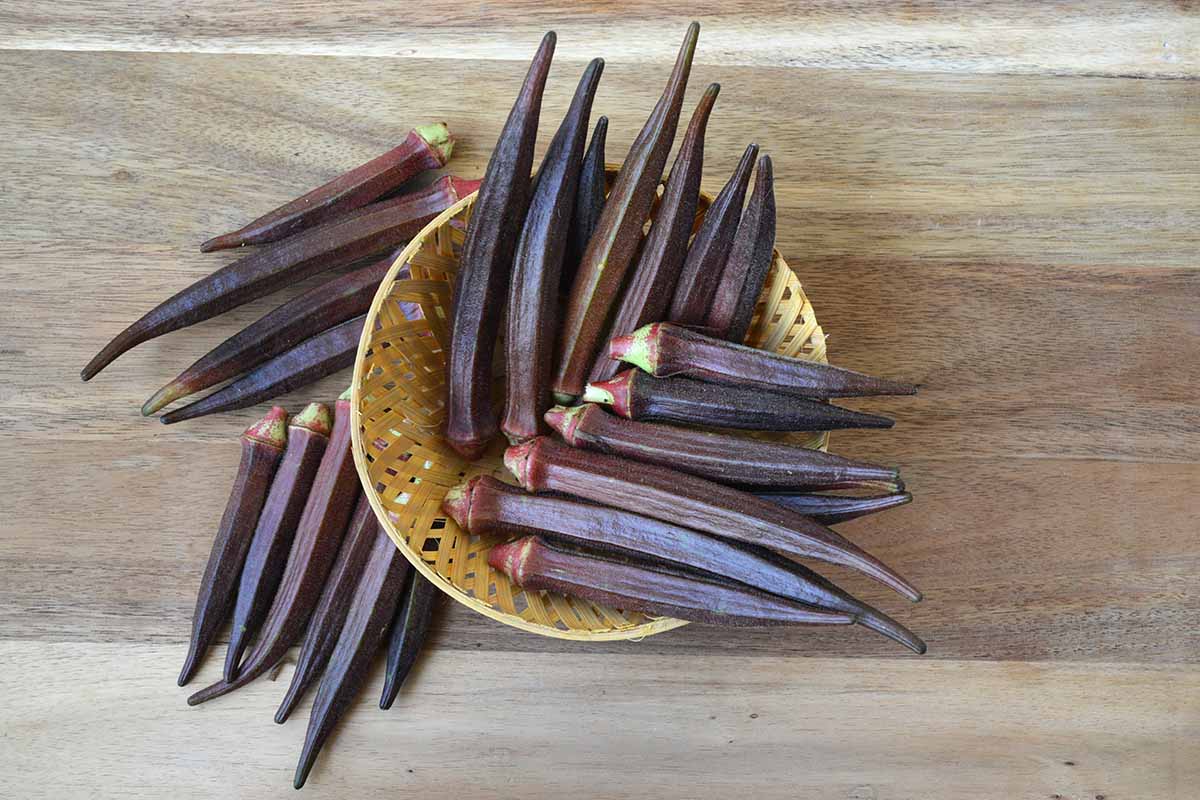
Beyond those garden forays, I’d recommend trying grilled okra as a snack or side dish.
Simply brush on a little olive oil, sprinkle on some kosher salt and Italian seasoning, and grill for five minutes until they’re crisp and tender and have char marks.
Even reluctant veggie eaters like my husband enjoy these vegetal treats, especially with your favorite dipping sauce at the ready.
My other favorite preparation is pan-frying battered red okra rounds.
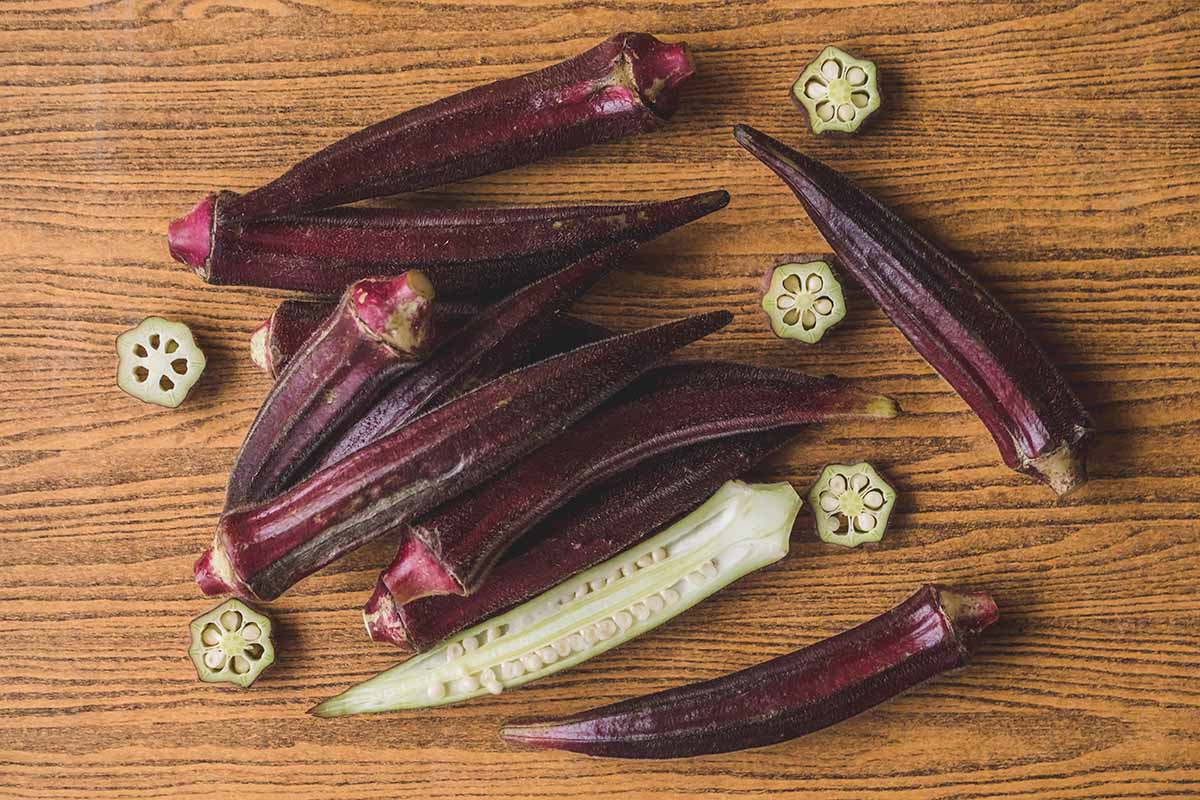
If you’re expecting vegetarian or vegan guests for a weekend or potluck this summer, I heartily recommend these savory morsels as a substitute for chicken tenders in a crunchy dinner salad.
You will quickly notice that your crimson okra tends to turn very light red or even green during cooking. That’s just the nature of ‘Burgundy,’ nothing to worry about.
A more valid worry is of course the slimy reputation cooked okra has. Quick steaming, air frying, pickling, and pan frying eliminate the viscous reaction when okra meets hot water.
Of course, with traditional gumbo, the okra’s somewhat-slimy thickening properties are part of the appeal. If you’d like a first-hand experience with this popular low-country stew, try Foodal’s recipe for New Orleans style seafood gumbo.
Quick Reference Growing Guide
| Plant Type: | Annual vegetable | Tolerance: | Drought, heat, moderately poor soil, part sun |
| Native to: | Tropical Africa and Asia | Maintenance: | Low |
| Hardiness (USDA Zone): | 9-12 | Soil Type: | Organically rich loam |
| Season: | Summer | Soil pH: | 6.5-7.5 |
| Exposure: | Full sun | Soil Drainage: | Well-draining |
| Time to Maturity: | 50-60 days | Companion Planting: | Cucumbers, sweet peppers, eggplant, melons |
| Spacing: | 18-24 inches | Avoid Planting With: | Other vegetables placed too close or shorter garden plants that require direct sun |
| Planting Depth: | 1/2-1 inch (seeds) | Order: | Malvales |
| Height: | 4-5 feet | Family: | Malvaceae |
| Spread: | 2 feet | Genus: | Abelmoschus |
| Water Needs: | Moderate | Species: | Esculentus |
| Common Pests and Diseases: | Aphids, armyworms, cabbage loopers, corn earworms, cucumber beetles, flea beetles, stink bugs, thrips, root knot nematodes, spider mites; Fusarium wilt, powdery mildew, southern blight | Cultivar: | ‘Red Burgundy’, aka ‘Burgundy’ |
You’ll Love Seeing Red
Whether you choose it for good eating or simply as an ornamental addition to the summertime garden, you’re sure to adore ‘Burgundy.’
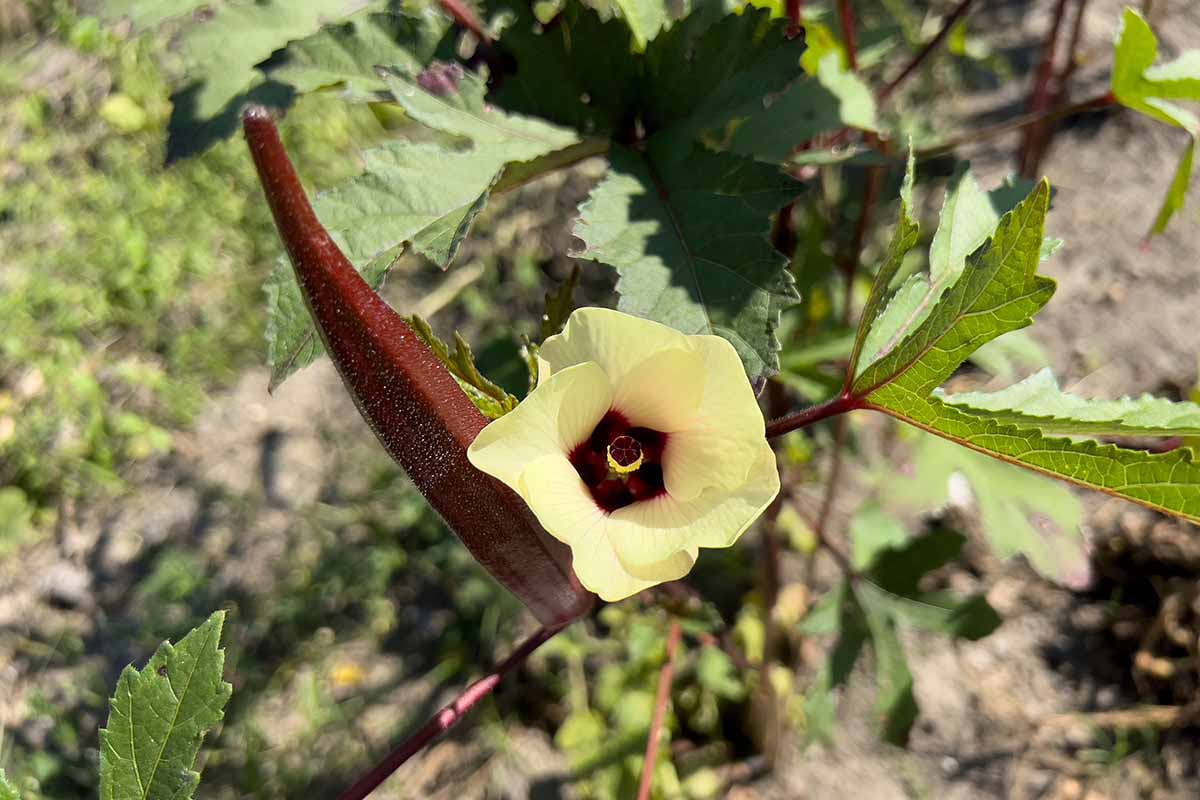
Have you grown red okra before? Let us know if you become a fan, or share your insights if you’re already growing this Southern favorite.
The comments section below awaits your input, and our readers would enjoy hearing about your experience.
And if you took away valuable information and would like to know even more, check out these okra guides next:


